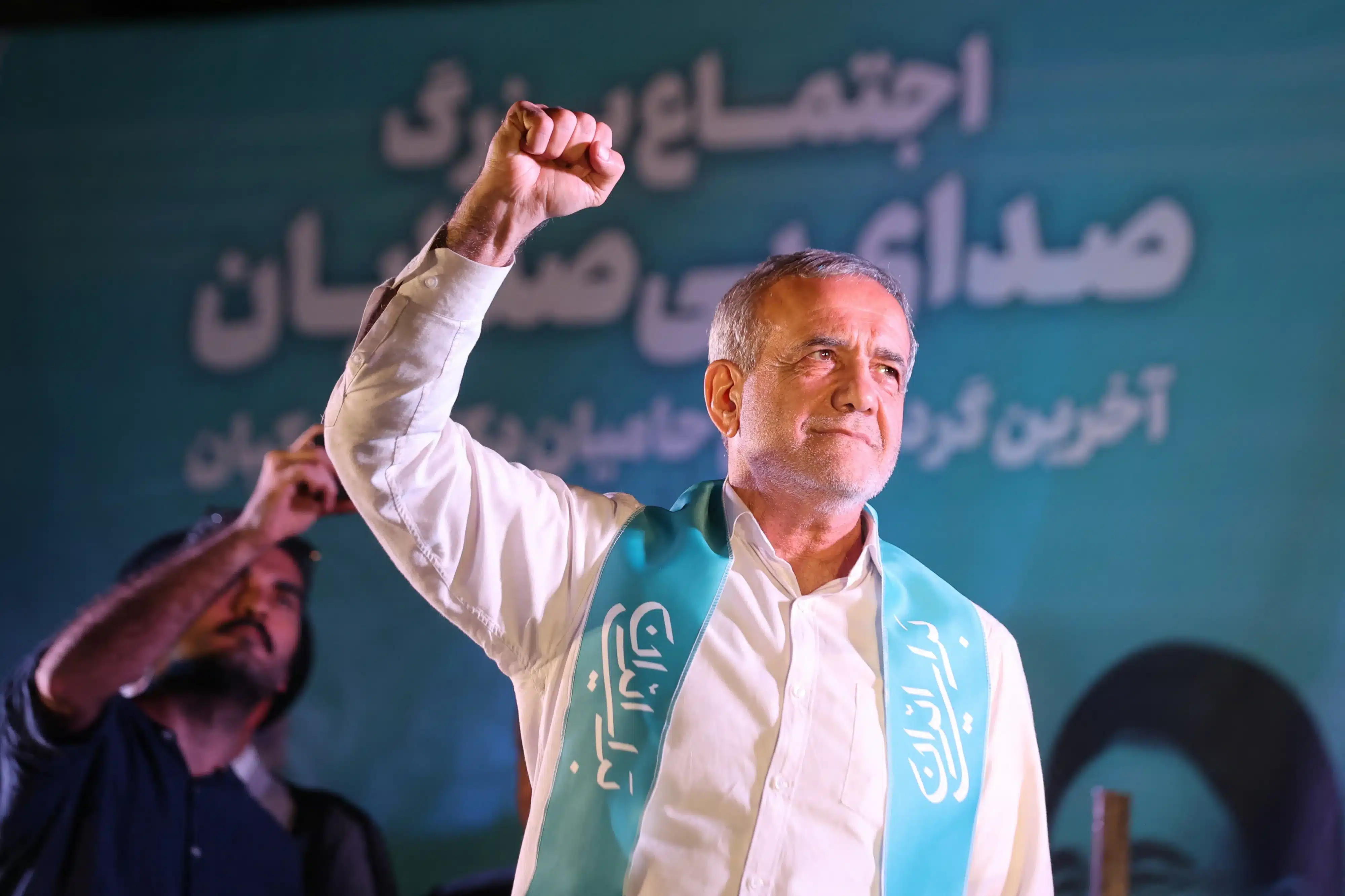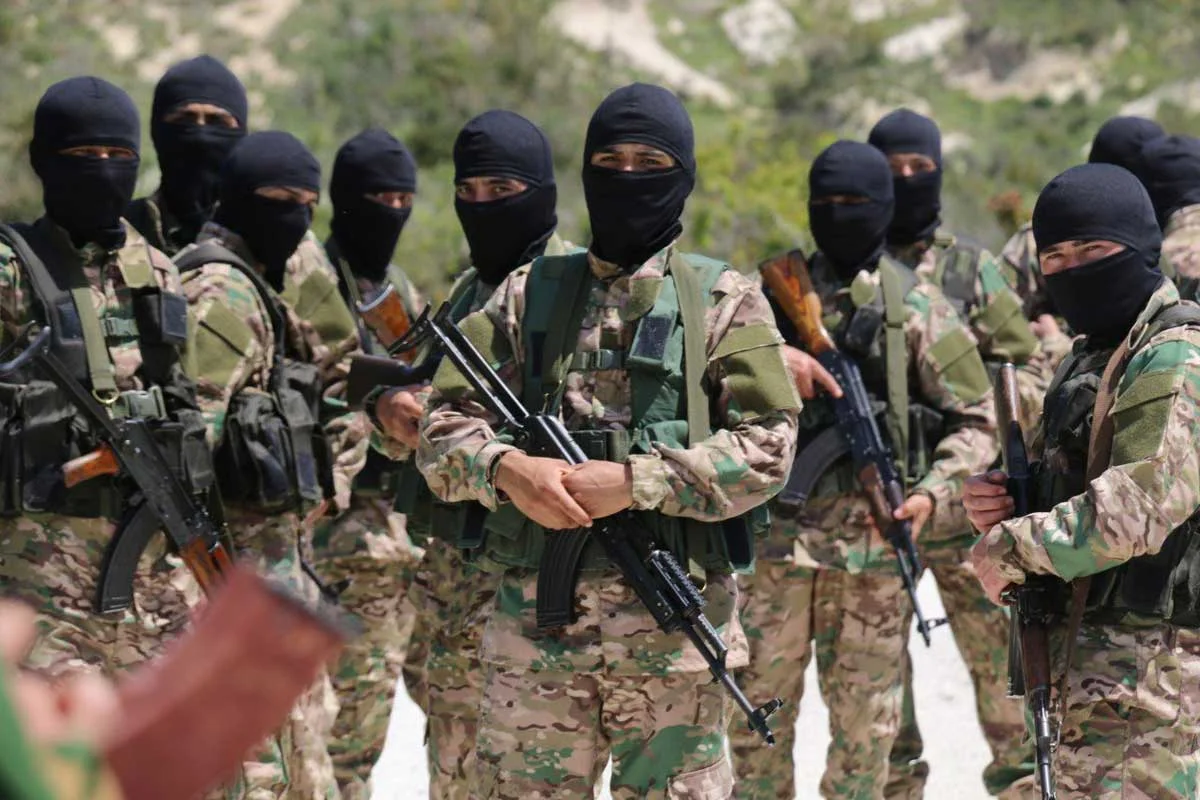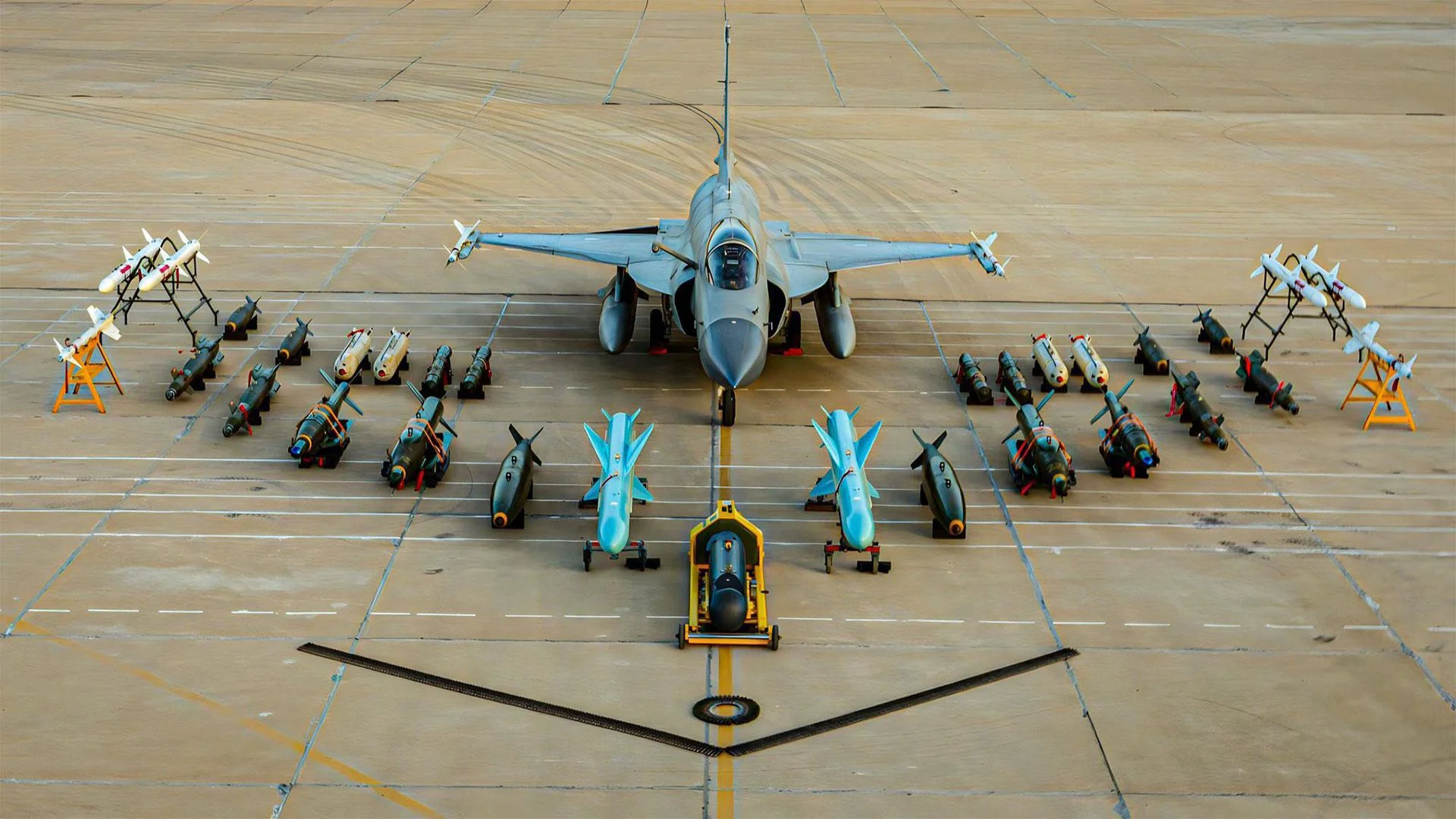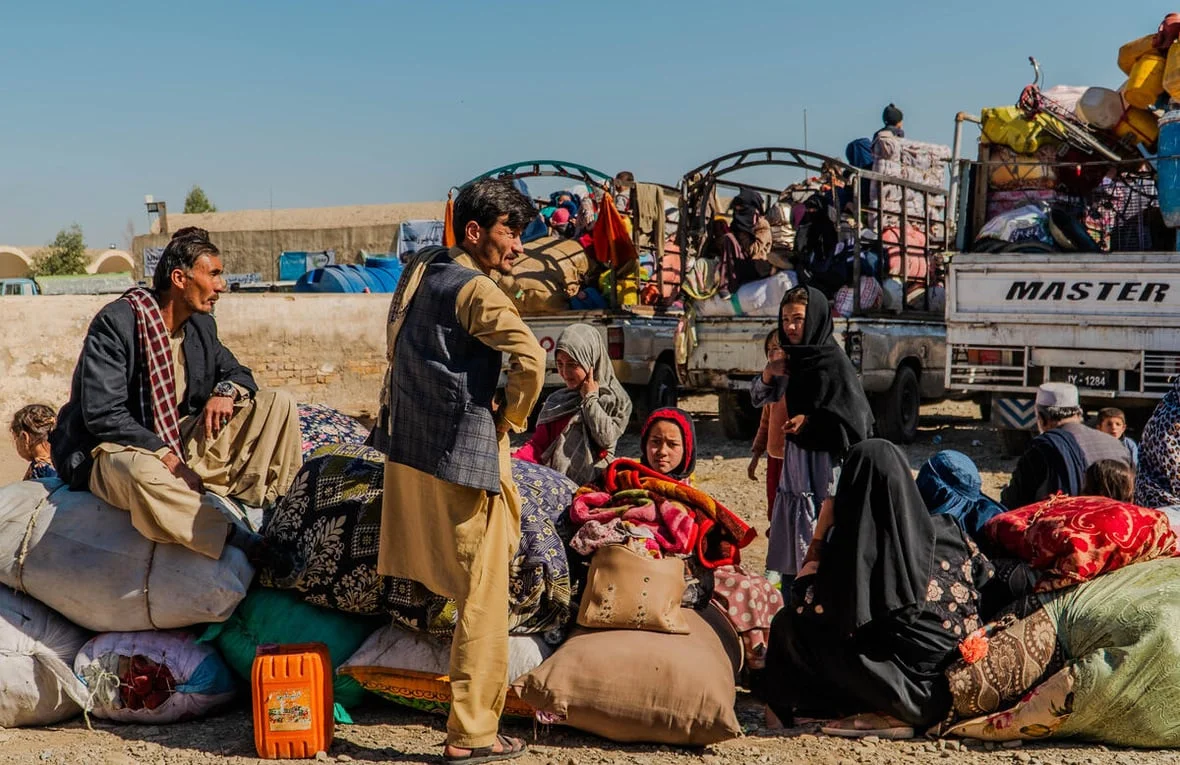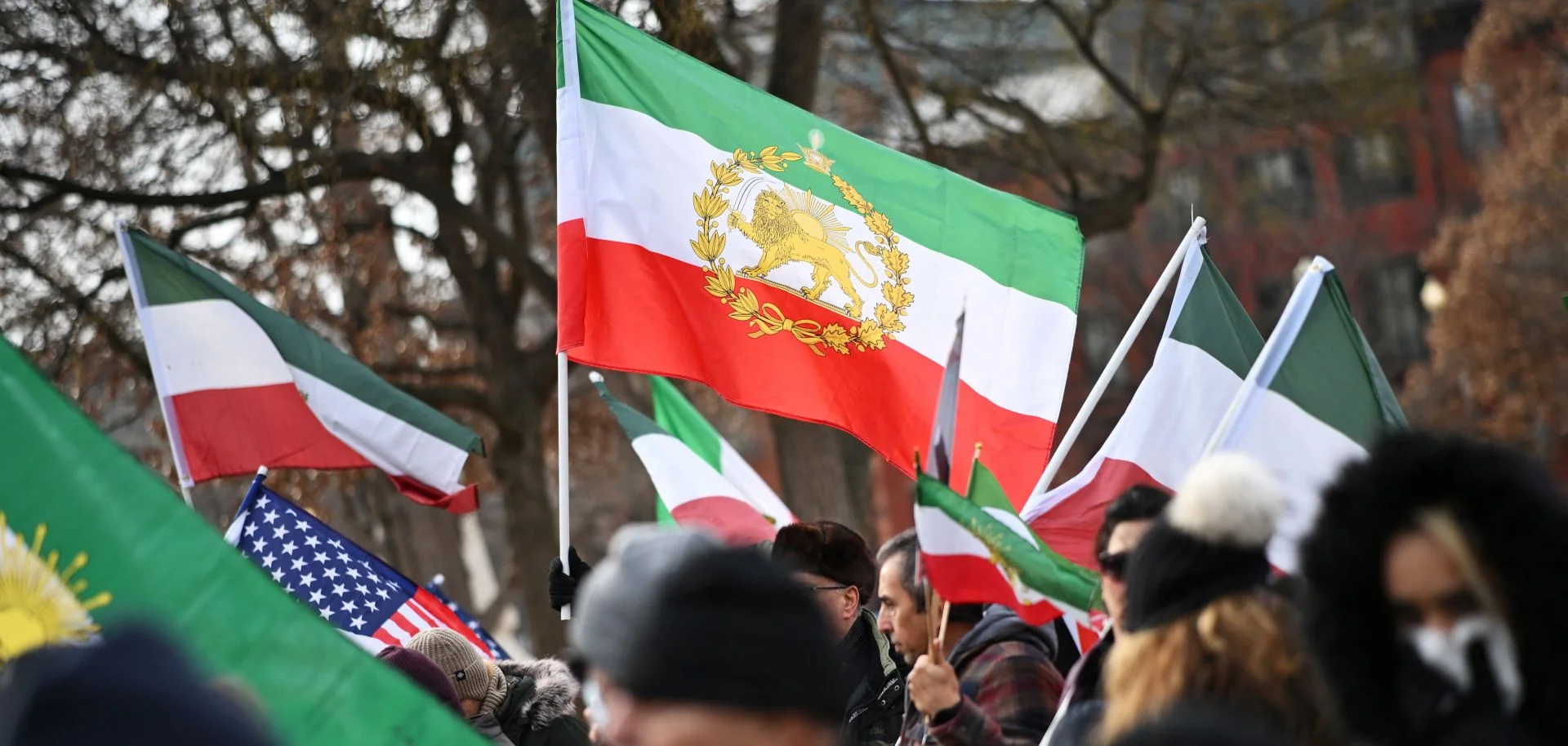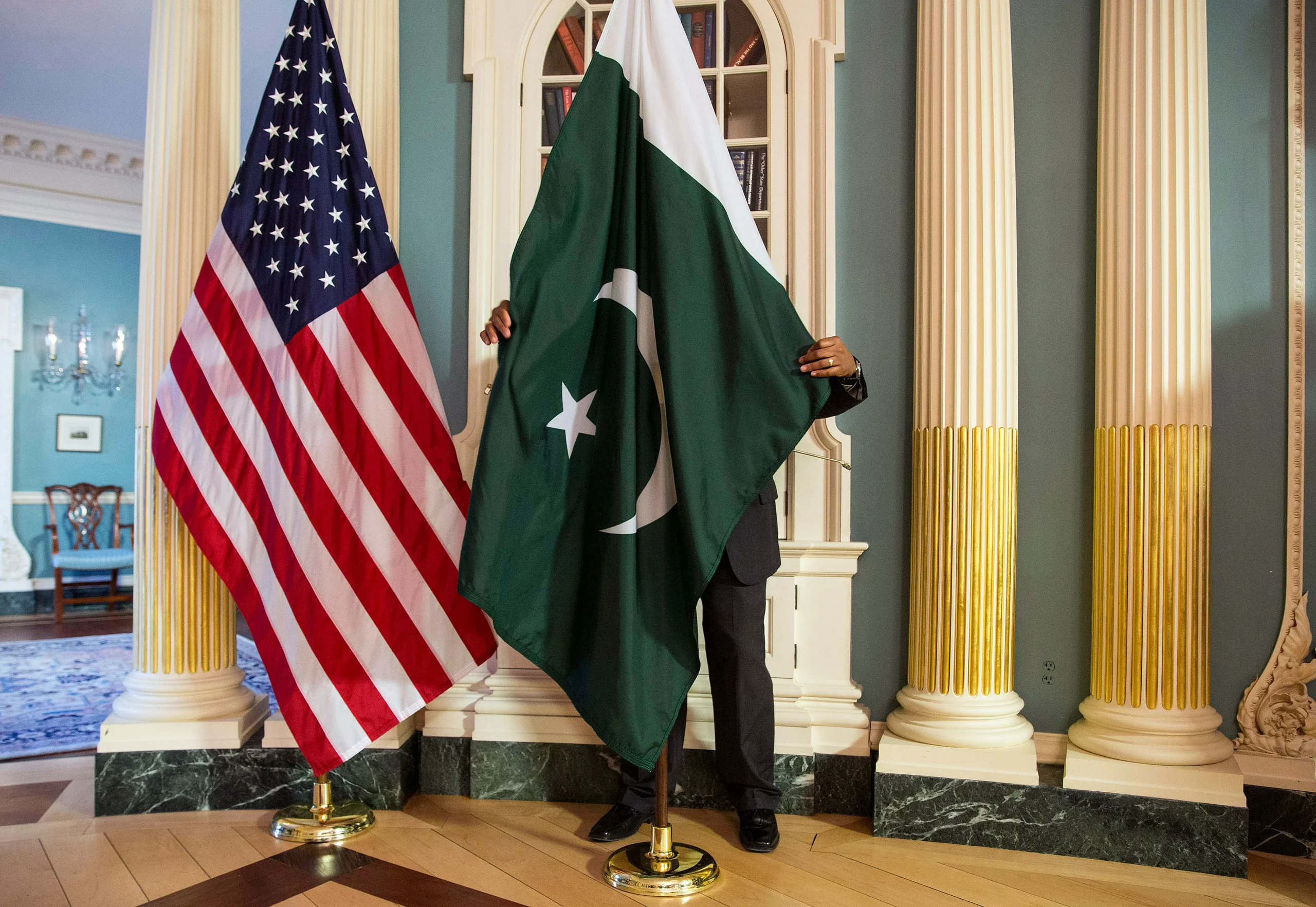The Iranian election 2024 has delivered a message of cautious optimism from the Iranian people. Masoud Pezeshkian, the moderate candidate, won the July 5, 2024 runoff with 53.7% of the vote, decisively defeating hardliner Jalili who secured 44.3%. His victory marks a significant shift in Iranian politics towards moderation. While this result falls short of a landslide, the nearly 10-point margin indicates a significant victory. Coupled with a voter turnout increase of nearly 10% from the first round, it suggests a public eager for a less confrontational approach.
Tehran was jolted into silence on May 19, 2024, as news spread of President Ebrahim Raisi’s fatal helicopter crash. The unexpected death of this hardline cleric, a close confidante of Supreme Leader Ayatollah Ali Khamenei, plunged the Islamic Republic into a period of uncertainty, demanding a snap election within 50 days, as dictated by the Iranian constitution. This unexpected turn of events has left both Iranians and the international community wondering – will this election reshape a nation navigating a region rife with complexities and shifting alliances?
The first act of this political drama unfolded on June 28th, revealing a nation grappling with apathy and a yearning for change. The record-low voter turnout of 39.9%, the lowest since the 1979 revolution, served as a stark reminder of the chasm between the Iranian people and their leadership. It spoke volumes about the perceived lack of choice and the yearning for a different path, signaling a deep well of discontent even among those who participated in the electoral process. The Iranian Election 2024 became a focal point for these sentiments.
Two Visions Emerge from the Iranian Election 2024
![Masoud Pezeshkian and Saeed Jalili, Iranian presidential candidates [Reuters].](https://southasiatimes.org/wp-content/uploads/2024/07/sww-1719824900.webp)
In the 2024 Iranian election, Masoud Pezeshkian emerged amidst a sense of disillusionment. The unassuming heart surgeon’s campaign resonated with those advocating for a less confrontational approach, both domestically and internationally.
Garnering 42.5% of the vote, Pezeshkian, a veteran lawmaker himself, positioned himself as a pragmatist, willing to engage with the West and prioritize economic recovery. His appeal lies not only in his economic promises but in his subtly expressed desire for a less rigid social environment. Unlike his rivals, Pezeshkian has publicly criticized the government’s handling of protests, suggesting a potential for greater individual freedoms and a more nuanced approach to social issues. This resonated with many following Iran’s election.
Yet, despite his initial lead, Pezeshkian fell short of the crucial 50% threshold needed to secure an outright victory in the Iranian Election 2024, a stipulation of Iranian electoral law. This paved the way for a run-off election, that took place on July 5th, setting the stage for a tense showdown with his primary rival, Saeed Jalili.
Jalili, a figure deeply embedded within Iran’s conservative establishment, secured 38.7% of the first-round vote, becoming the torchbearer for those favoring continuity. Jalili, a former nuclear negotiator known for his staunch defense of Iran’s nuclear program and resistance to Western pressure, embodies a vision deeply rooted in the principles of the Islamic Revolution. He, along with other conservative contenders like Mohammad Baqer Ghalibaf, the influential parliament speaker, represents a political force deeply suspicious of the West and determined to forge a different path for Iran, one anchored in self-reliance, strengthened ties with countries like China and Russia, and a steadfast commitment to the “resistance economy” – a model aimed at achieving economic independence and weathering the storm of sanctions. Jalili, in line with this view, has defended the hijab law as crucial to “preserve and strengthen the institution of family,” contrasting with Pezeshkian’s more nuanced stance on social policies. Iran’s election brought this ideological divide into sharp focus.
Pezeshkian’s Foreign Policy: Challenges Ahead
This divide between engagement and resistance lies at the heart of Iran’s foreign policy dilemma. Pezeshkian, echoing the hopes of many in the West, has voiced his commitment to reviving the Joint Comprehensive Plan of Action (JCPOA), the 2015 nuclear deal that promised Iran economic relief in exchange for limitations on its nuclear program. He envisions a future where Iran, freed from the shackles of sanctions, can reintegrate into the global economy, attracting investment and expertise – a prospect particularly enticing to European nations eager to tap into Iran’s potential.
However, in the course of the Iranian Election 2024 campaign, Jalili and his supporters viewed the JCPOA with skepticism, seeing it as a symbol of Western pressure and broken promises, particularly following the Trump administration’s unilateral withdrawal in 2018. They advocate for a foreign policy that prioritizes strengthening ties with those who stand against the perceived unilateralism of the West – namely China and Russia. This eastward pivot, already underway under Raisi, offers Iran a strategic alternative, allowing it to circumvent Western sanctions and forge partnerships based on shared interests, particularly in the economic and security domains.
![Iran's Acting President Mohammad Mokhber's presence at the Shanghai Cooperation Organization summit underscores Iran's strategic eastward pivot for stronger multilateral engagement [Image via SCO].](https://southasiatimes.org/wp-content/uploads/2024/07/171256249.webp)
A Delicate Dance: Iran’s Evolving Relationships with China, Russia, and the West
Yet, as Iranian-born analyst Ghazal Vaisi points out, this pivot towards China is not without its challenges. While China benefits from discounted Iranian oil, it has yet to deliver on its investment promises. “China continually benefits from this relationship,” Vaisi observes, “saving billions of dollars annually by buying cheap Iranian oil without having to make good on investment promises to Iran.”
The results of the Iranian Election 2024 might lead China to reassess its approach and double down its effort to keep Iran from opening up to the West.
Russia presents a different set of opportunities and challenges for Iran. Moscow, aligned against the West ideologically, faces economic constraints of its own. Its focus on the Ukraine war limits its capacity to offer significant economic assistance to Tehran. However, the relationship offers Iran military and strategic benefits. The increasing military collaboration between Iran and Russia includes Iran supplying drones to Russia for the Ukraine conflict. This cooperation underscores a pragmatic alignment of interests between the two nations. However, it also raises concerns about potential long-term risks associated with such partnerships. It remains to be seen how the arrival of an allegedly pro-Western candidate in Iran’s election will impact this delicate alliance.
Adding to the complexity is the unpredictable nature of United States (US) politics. Looming over this geopolitical chess match is the specter of the 2024 US presidential election. A potential return of Donald Trump to the White House could further complicate Iran’s calculations. This may potentially push it further into the arms of China and Russia while dimming any remaining hopes for a diplomatic resolution to the nuclear issue. This fear is palpable in Iran, transcending the political divide. As analyst Azadeh Zamirirad notes, “The fear that at the end of the day, any U.S. president would be after a regime change in Iran is shared across the political spectrum.” Iran’s election took place against this backdrop of uncertainty.
Navigating Regional Fault Lines: Iran’s Foreign Policy Constraints
This uncertainty extends to the wider region, particularly to countries in South Asia. The Iran’s election impact on this region will likely be subtle, but not insignificant.
Despite Iran’s geographic potential as a trade gateway and energy provider for South Asia, experts predict that its diplomatic isolation, coupled with the potential continuation of hardline policies, will limit its ability to fully engage.
India, wary of US sanctions, will likely continue its “hedging” strategy, cautiously engaging with Iran on projects like the Chabahar port and the International North-South Transport Corridor (INSTC) while maintaining its ties with the West.
However, there is an opportunity of potential for greater cooperation in Afghanistan. The Afghan Interim Government’s uneasy relations with Pakistan and its interest in Iran’s Chabahar port could enhance Indo-Iranian coordination on Afghanistan. This potential collaboration, however, faces constraints from broader regional dynamics.
Pakistan, navigating internal instability and economic challenges, carefully manages its relationship with the US, Saudi and Iran. While there are shared interests, such as the gas pipeline project, which has faced delays, Pakistan aims to balance these partnerships without compromising its strategic interests or international obligations. The recent dynamics of Iran’s election are observed, but their direct impact on Pakistan’s policies remains measured and context-specific.
Looming over these intricate regional dynamics is the ever-present influence of China. Its economic leverage over Iran and Pakistan and its burgeoning relationship with the Interim Afghan Government will undeniably shape the course of events. Iran’s ability to leverage its relationship with India as a counterbalance to China’s growing dominance will be a key factor to watch.
Adding another layer of complexity is the ever-present shadow of the Israeli-Palestinian conflict. Iran’s unwavering support for Palestinian resistance, a cornerstone of its foreign policy identity, will continue to be a point of contention with the West and a source of regional tension. Iranian Ambassador to Pakistan, Dr. Reza Amiri Moghadam, underscores Tehran’s stance: “The Islamic Republic of Iran…rules out any compromise on the fundamental policy principles. Individuals therefore don’t matter in the system.” Iran’s election is unlikely to alter this fundamental stance.
The ambassador’s words speak to a broader truth about Iran’s system of governance. While the president holds significant sway over the economy and social policies, ultimately, the true arbiters of Iranian foreign policy – Supreme Leader Khamenei and the influential Islamic Revolutionary Guard Corps – have made it abundantly clear that Iran’s core interests are not up for debate. Hence, the ascendency of moderates in Iran’s election, while significant, will operate within these existing power structures.
![Supreme Leader Ayatollah Ali Khamenei in a meeting in Tehran, Iran [File: Office of the Iranian Supreme Leader via AP].](https://southasiatimes.org/wp-content/uploads/2024/07/AP24023702446874-1708773389.webp)
Iran’s Choice: Change or Continuity?
This reality tempers any hope for a dramatic foreign policy reset, even under a Pezeshkian presidency.
While Pezeshkian might manage to secure a revival of the JCPOA, providing a much-needed economic boost and potentially thawing relations with the West, the broader contours of Iran’s regional posture and its rivalry with regional foes like Israel are unlikely to change.
Tehran’s support for regional proxies, from Hezbollah in Lebanon to the Houthis in Yemen, has troubled Saudi despite recent reproachment and raised concerns among its potential partners, including China, who are wary of instability in regions crucial to their economic interests. The outcome of Iran’s election is unlikely to fundamentally alter these calculations as IRGC plays a central role in Middle-Eastern theatre.
There are significant stakeholders within Iran, like former nuclear chief Fereydoun Abbasi, who still believe that Jalili’s “unwavering stance” against the West might, ironically, be the key to “compel Western nations to reconsider the policy of sanctions.” This “peace-through-strength” argument adds another layer of complexity to the debate surrounding Iran’s future direction, further raising the difficulties for the new reformist president. Iran’s election has exposed these internal divisions.
Regardless of how this tug-of-war between a newly elected government and the conservative establishment plays out, one thing is certain: Iran, a nation with a rich history and an unwavering determination to chart its own course, will remain a significant player in the region and beyond. Its choices, shaped by internal dynamics, regional ambitions, and global power struggles, will continue to reverberate across the Middle East and beyond, impacting not only its own destiny but the future of the region as a whole. Iran’s election is a chapter in this ongoing story.
![The eighth round of Iran nuclear talks resumed in Vienna on Monday [Image via Reuters].](https://southasiatimes.org/wp-content/uploads/2024/07/2021-12-17T143320Z_593408865_RC2EGR9ZZFIH_RTRMADP_3_IRAN-NUCLEAR-TALKS.webp)
A New Chapter? International Reactions and Pezeshkian’s Path Forward
Pezeshkian’s victory in Iran’s election has been met with a wave of congratulations from leaders across the globe, particularly from countries eager to see a shift in Iranian foreign policy. Russian President Vladimir Putin expressed hope for “constructive bilateral cooperation,” while Saudi Crown Prince Mohammed bin Salman affirmed his “keenness on developing and deepening relations.” Chinese President Xi Jinping echoed this sentiment, stating his willingness to work with President Pezeshkian to deepen the “China-Iran comprehensive strategic partnership.” Pakistani leadership also offered wishes on the occasion. However, Western leaders have been noticeably silent, highlighting the challenges Pezeshkian faces in rebuilding trust and re-engaging with the West.
The victory of moderates in Iran’s election signifies a pivotal moment for Iran, a potential turning point, but not a revolution.
The increased voter turnout in the runoff, compared to the historic lows of the first round, reflects a cautious hope, a willingness to embrace pragmatism over ideology. However, he inherits a nation grappling with deep-seated economic woes, a complex geopolitical landscape, and the enduring legacy of political and ideological struggles. He must navigate the inherent limitations of the Iranian presidency, where the Supreme Leader and the IRGC maintain significant control over foreign policy, and contend with the ever-present shadow of the Israeli-Palestinian conflict, a constant source of regional tension.
Pezeshkian task is not simply to heal Iran’s economy but to mend its fractured relationships – bridging the generational divide at home, rebuilding trust with Western powers while addressing their legitimate concerns, navigating the delicate balance of regional alliances and rivalries, and recalibrating Iran’s relationship with Russia to serve its national interests. Whether this election marks a genuine shift towards pragmatism and a more open Iran, or merely a reprieve from a familiar trajectory, remains to be seen. The world will be watching closely, hoping that this time, a surgeon’s steady hand can truly heal a nation yearning for a healthier future.
The views expressed in this article are the author’s own. They do not necessarily reflect the editorial policy of the South Asia Times.

